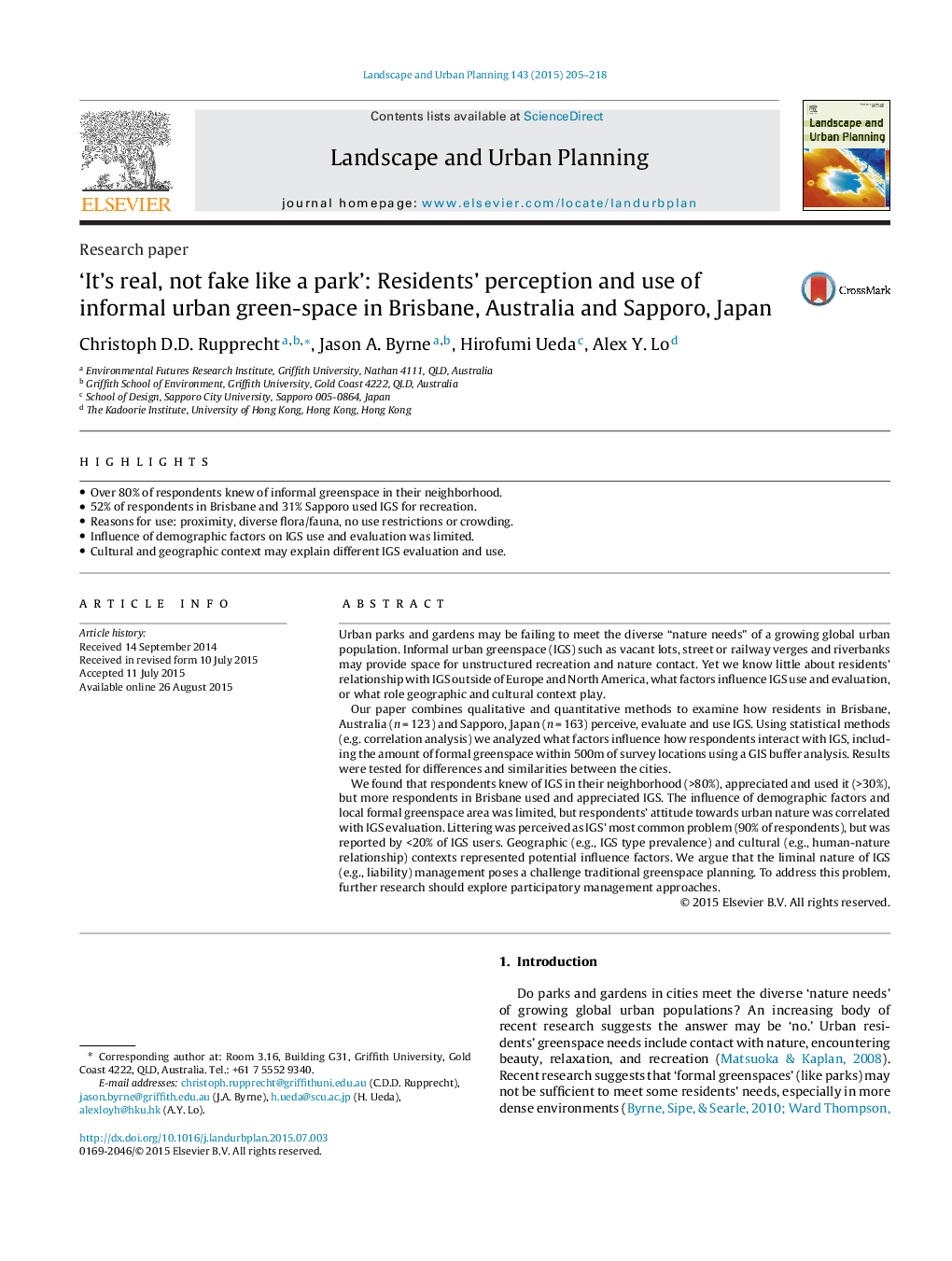| Article ID | Journal | Published Year | Pages | File Type |
|---|---|---|---|---|
| 7461053 | Landscape and Urban Planning | 2015 | 14 Pages |
Abstract
We found that respondents knew of IGS in their neighborhood (>80%), appreciated and used it (>30%), but more respondents in Brisbane used and appreciated IGS. The influence of demographic factors and local formal greenspace area was limited, but respondents' attitude towards urban nature was correlated with IGS evaluation. Littering was perceived as IGS' most common problem (90% of respondents), but was reported by <20% of IGS users. Geographic (e.g., IGS type prevalence) and cultural (e.g., human-nature relationship) contexts represented potential influence factors. We argue that the liminal nature of IGS (e.g., liability) management poses a challenge traditional greenspace planning. To address this problem, further research should explore participatory management approaches.
Related Topics
Life Sciences
Agricultural and Biological Sciences
Ecology, Evolution, Behavior and Systematics
Authors
Christoph D.D. Rupprecht, Jason A. Byrne, Hirofumi Ueda, Alex Y. Lo,
